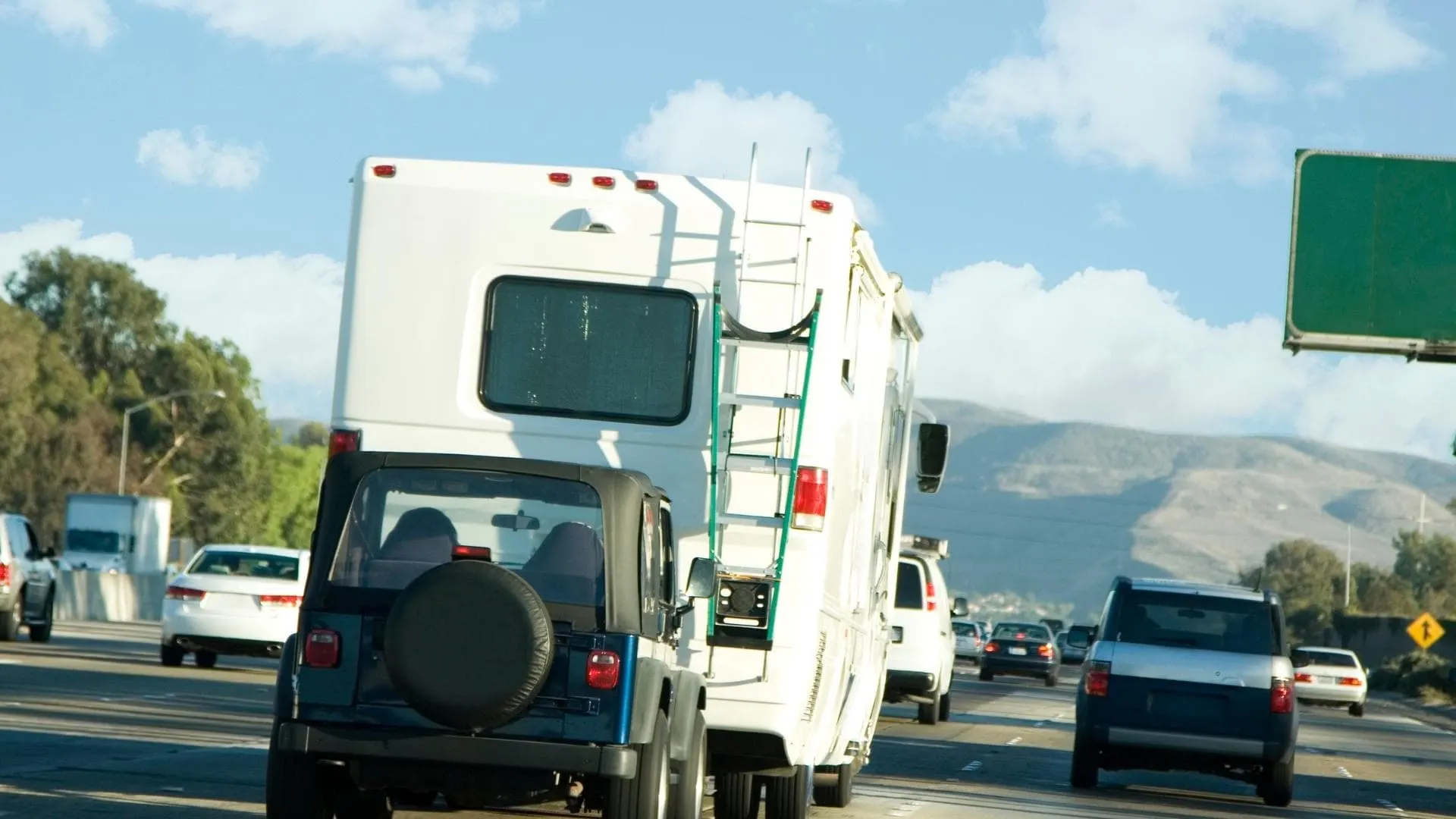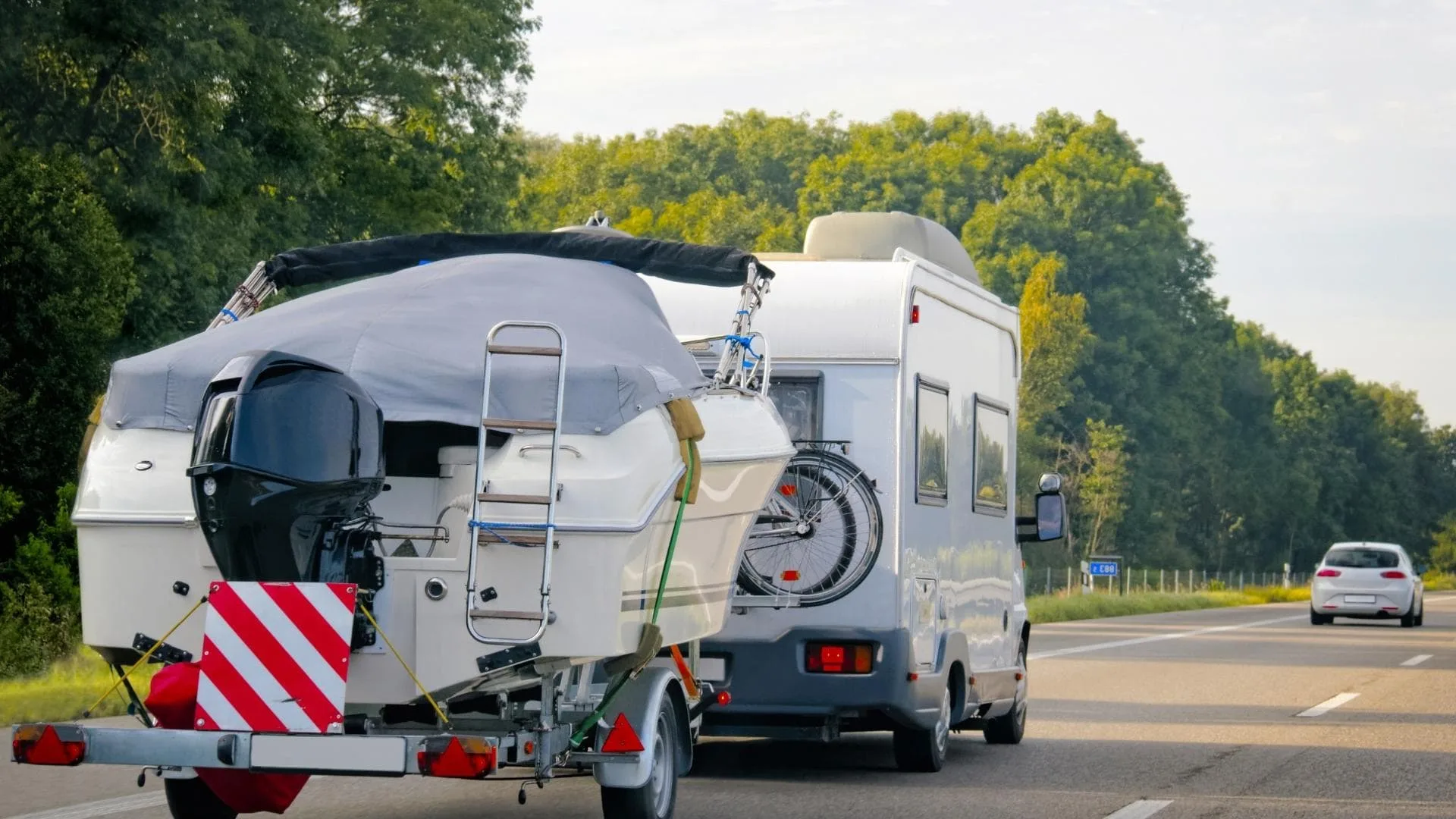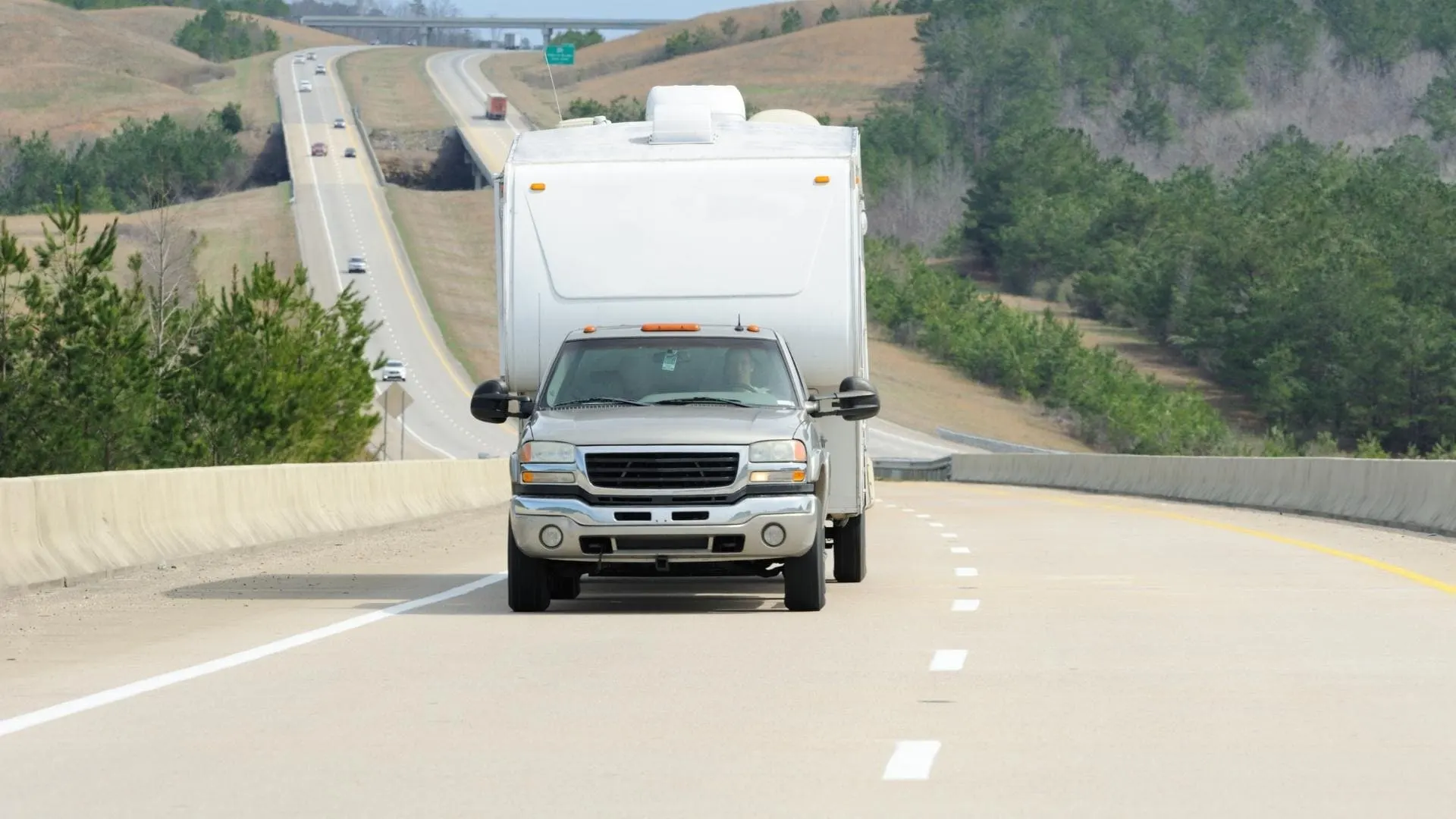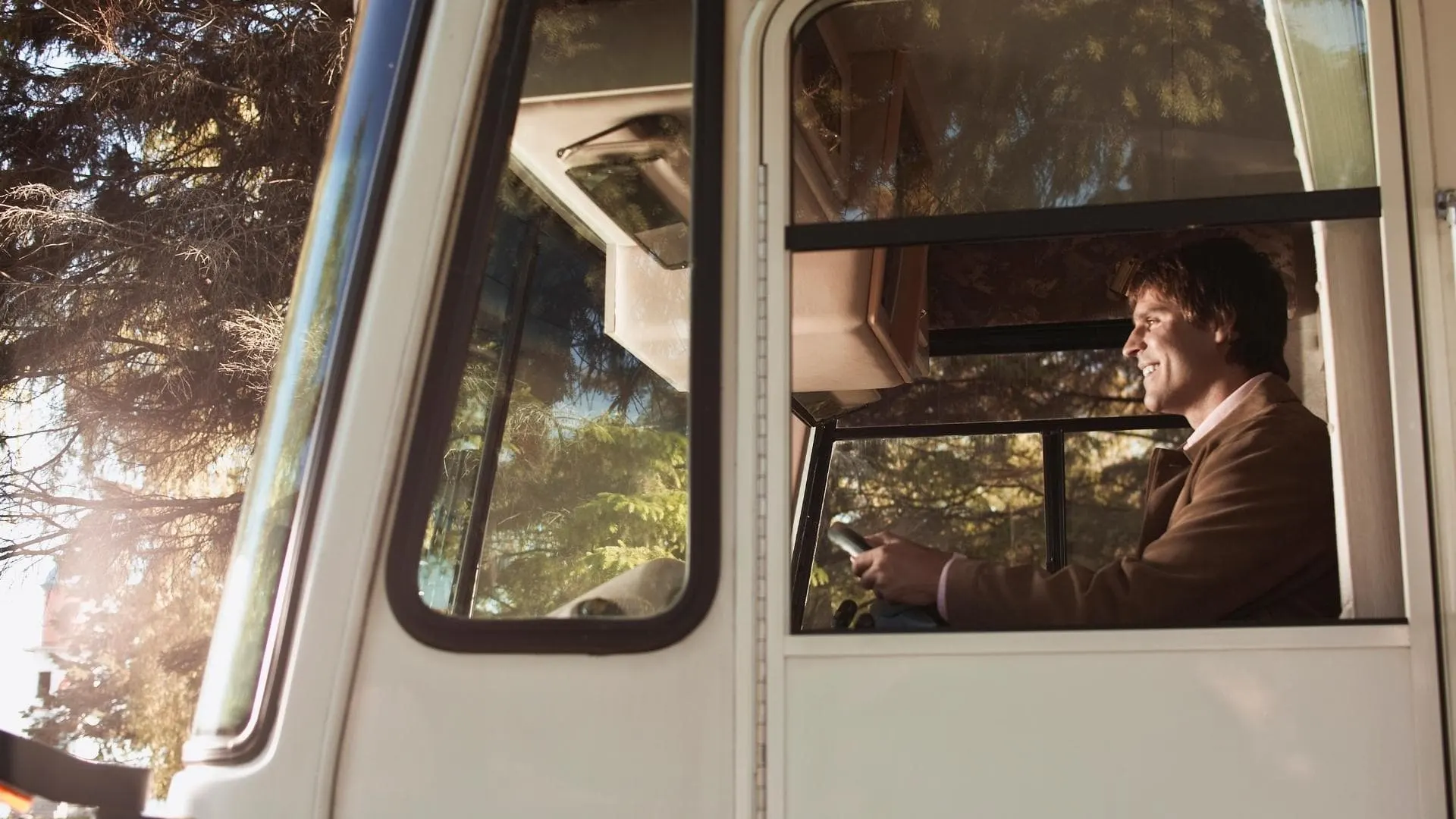We don’t hear about RV accidents as frequently as we hear about other vehicle accidents, and there are a couple of reasons for this. First, of course, is the fact that there are fewer RVs on the road than there are other types of vehicles. And second, most people don’t tend to drive their RVs as much as they drive cars, trucks, and SUVs. Still, RVers see their fair share of trouble on the road, and there are some common themes among RV accidents. So, in today’s post, we’re taking a look at the most common RV accidents, and how to avoid them!
How Common Are RV Accidents?
Reports from the National Highway Traffic Safety Administration (NHTSA) tell us that there are around 76,000 RV accidents every year. While that is a lot, it’s far less than the number of accidents in which passenger vehicles are involved annually… largely for the reasons noted above.
That said, there are far too many RV accidents. In fact, operating an RV can be challenging, especially for people who aren’t aware of certain things that can occur when driving an RV down the road, and for those who aren’t familiar with some very important driving techniques.
Remember – the term “RV” refers to all types of recreational vehicles including motorhomes, camper vans, 5th wheels, and travel trailers of all types, including 5th wheels and toy haulers. All of these vehicles, whether a motorhome or a towable, require extra respect when driving down the highway.
RVs are generally flat-sided, usually quite tall, have blind spots, sway in the wind, and many are of course being pulled behind another vehicle. Worse yet, they don’t usually require any special training or licensing to drive! And unless the person driving the RV takes the time to learn how to drive that particular type of rig, or to learn about the implications of towing a large load, it’s easy to make mistakes. It’s essential to know where the blind spots are, and what terms like “off-tracking” and “rear overhang” mean. Without some additional knowledge, all bets are off, and we’re all sharing the road with drivers who may not be proficient in driving a home on wheels.
Let’s take a look at the most common RV accidents and, more importantly, how we can avoid them.
What Are the Most Common Causes of RV Accidents?
Following are the 10 most common causes of RV accidents. All of these can be avoided, with some thought and care, and a little education.
Tired Drivers

We all get tired driving long distances, and the road has a way of lulling us into a zone. Driving while you’re fighting a feeling of being tired is NEVER a good idea. Falling asleep ever so briefly has been the cause of many serious accidents, and is easily avoidable when you’re traveling in a home-on-wheels.
We’ve all done it. We’ve got another 75 miles to go before we reach our destination. We’re so close – there’s no sense in stopping for the night. But the road is lulling us to sleep, and we actually almost nod off there for a second. Still, we’re almost there!
Don’t drive tired. RVers have a wonderful advantage over other drivers. We’re carrying a house along with us! We’ve got food, water, a bathroom, and even a comfortable place to sleep.
And there are many free places to stay overnight to catch some sleep so that we can safely hit the road in the morning. TO help you find them, here are links to our posts, “How to Find Free Overnight RV Parking”, and “Can You Camp in Walmart Parking Lots?”
Many very gracious businesses allow RVers to quietly and respectfully spend the night in their parking lots at no cost. And of course, there are rest areas, truck stops, and myriad other locations. So, there’s really no excuse to drive tired.
Tired drivers are a common cause of RV accidents. Don’t do it. If you get into an accident – or cause an accident – you’ll save no time at all, and you’ll be further delayed in reaching your destination if you reach it at all.
The only way to avoid an RV accident caused by a tired driver is to not drive tired.
Wind Gusts / High Winds
This is a tough one. We’ve all caught some wind that caused us to grip the steering wheel a little tighter (sometimes white-knuckle tighter), and has made us feel like we’re about to blow right off the road. There are reasons for this experience.

RVs that are tall and flat-sided can easily catch a gust of wind provided by the weather or by a large passing truck, so extra caution is always warranted. However, traveling in high winds should be avoided whenever possible.
RVs are tall and often flat-sided, and wind has a way of taking hold and showing us who’s boss. This is often less of an issue with heavy motorhomes, but over the years many RV manufacturers have designed lighter RVs to lower costs and reach the budgets of more people. A lightweight, tall, flat-sided vehicle can really take a hit from side winds in particular.
The way to avoid wind issues is to either not travel on very windy days, slow down when you hit areas of high winds, or take back roads rather than highways on days when the winds are greater than 20 mph. When staying off the road isn’t an option, driving more slowly is.
Keep in mind that the wind will have less impact on a slower-moving vehicle. Traveling at slower speeds is often necessary for an RV, especially on a windy day. Many RV accidents might have been avoided had the driver simply slowed down while traveling in windy conditions.
There’s another wind issue that can occur as we travel, and that occurs when an 18-wheeler, or another large vehicle, passes us. When the large truck is beside you, an air vacuum draws you in, but once the truck passes, the vacuum is broken and pushes you outward.
Here again, slowing down slightly can help to stabilize your rig when this occurs.
Overloaded RVs

Paying close attention to the weight your RV is carrying is a good way to avoid accidents that can be caused by overloaded rigs.
You may have noticed by now that all of the most common causes of RV accidents are in the control of the driver, and this one is no exception.
It’s the responsibility of the RVer to know the GVWR (gross vehicle weight rating) of the rig and to load it accordingly. Driving an unbalanced, overweight RV stresses the brakes and the suspension, and can make your rig unstable.
The best way to avoid RV accidents caused by overloaded RVs is to pay attention to your weight and respect the manufacturer’s weight ratings.
Unevenly Loaded Travel Trailers
An unevenly loaded travel trailer is an accident waiting to happen. Some very serious RV accidents are caused by this easily avoidable situation.

Any type of travel trailer that is excessively or improperly loaded can be destabilized causing dangerous sway issues.
Trailer sway generally occurs as a result of an improperly loaded trailer. If a trailer is loaded too heavily at the rear, trailer sway is almost guaranteed to result when you pick up speed.
Trailer sway is a side-to-side motion of the trailer you’re towing. Not only does that side-to-side motion make it difficult to stay on the road, but it can build to the point where it becomes whipping, tossing the trailer back and forth violently. This can – and often does – result in very serious RV accidents.
To learn more about trailer sway, check out our post, “Methods for Trailer Sway Control”, and watch the demonstration video embedded in that post.
Speed
Excessive speed is another of the most common causes of RV accidents. But we’re not necessarily talking about just driving at speeds in excess of the speed limit. We’re talking about that – AND – about driving too fast for conditions. And your RV itself qualifies as a condition.
An RV is not a car. It doesn’t drive like a car, change lanes like a car, brake like a car, or turn like a car. An RV, whether it’s a motorhome or a travel trailer, needs to be driven at speeds that are appropriate to the structure of the RV in combination with road conditions, wind and other weather conditions, weight, and more.
Reducing your speed is a good way to avoid an RV accident.
Inexperienced Drivers
Many RV drivers on the road are inexperienced. They may be very experienced drivers of cars, but they may have little experience driving an RV and even less knowledge of how to operate an RV safely.
In most states, there are no special licensing or training requirements to drive most RVs. This leaves a lot of people driving a very large rig down the road, sometimes at high speeds, who know very little about the safe operation of the rig.

Driving an RV is not the same as driving a passenger car. Because there are no requirements for learning how to drive a large motorhome or travel trailer, many accidents happen due to driver inexperience.
Most RVs are designed differently than cars, SUVs, and trucks. They’re longer and thus require a greater turning radius. They’re heavier, so they often require a much greater stopping distance.
A majority of RV accidents occur due to some level of RV inexperience. If you’re going to drive an RV, take the time to learn how to operate the vehicle safely, and practice those techniques. Practice will go a long way toward keeping you from being involved in an RV accident.
Distracted Drivers
Many accidents and fatalities have been caused by distracted driving. When you’re driving a large vehicle, you’re operating what can amount to a dangerous weapon. Staying focused on the enormous responsibility to have not only to your own passengers but also to everyone on the road around you is imperative.
Texting, checking Facebook, grabbing your phone because you heard a notification, even eating a meal as you drive – are all distractions that take your focus away from the one job you have which is to drive safely and pay attention to the road and your surroundings.
Blind Spots
Blind spots are an unfortunate cause of RV accidents and occur by nature of the way many RVs are designed.
The best way to avoid an accident caused by a blind spot is to take the time to learn how to properly adjust ALL of your RV’s mirrors and learn how to use them. Everyone who drives an RV should understand how to take full advantage of the mirrors and other safety equipment on the rig.
To learn more about properly adjusting and using your RV mirrors, we invite you to read our post on How to Adjust RV Mirrors, and watch the following video:
Miscalculated Turns and Stops
Driving an RV means driving a long, tall structure that is designed very differently from a car. If while driving an RV you take the exact same actions you take when you drive a passenger car, you’ll inevitably have an accident (or several), and the miscalculation of turns and stops are likely to be part of the problem.
Increasing your stopping distance when driving an RV is very important. Many accidents are caused by an RVer who doesn’t grasp the mass of the rig they’re operating, and who slides through a stop sign or a red light, or into another vehicle because adequate stopping distance has been underestimated.
Miscalculated turns frequently cause RV accidents. “Off-tracking” and “rear-overhang” are important terms every RV driver should know and understand, as are “wheel cut” and “wheelbase.”
Once you understand the terms and what they mean with regard to your driving, practicing driving your RV with that knowledge in mind will make you a far better – and safer – RV driver.
We encourage you to check out our post, “How to Drive an RV: Off-Tracking and Rear Overhang”, and to take the time to watch the following video. This is your chance to learn how to drive an RV from a professional:
Impaired Drivers
And finally, impaired drivers are a significant cause of RV accidents (and all motor vehicle accidents). This is very easily avoided.
If you’re going to drive your RV, please don’t do so while under ANY degree of influence of any type of alcohol or drugs. It doesn’t get much simpler than that. Anything that redirects your focus or dims your reaction time even slightly can become a contributor to a very serious accident. You’ve got thousands of pounds of rig under your control. Everyone around you (including your family) is counting on you to be on top of your game.
How Can You Avoid All of the Most Common Causes of RV Accidents?
To avoid all of the most common causes of RV accidents, taking the time to learn how to properly drive your RV goes a long way.
In addition, slow down (RVing is about relaxing – not hurrying!), increase your following distance (you’re stopping thousands of pounds), resist traveling on the highway in high winds, understand the weight ratings of your RV, and load accordingly.
And finally, there are the three “nevers”:
Never use a device while driving (don’t drive distracted), never drive when you are at any level of impaired, and never drive tired. Pull over, have a nice meal, get a good night’s rest, and then have your coffee and hit the road in the morning.
If we all take accident avoidance seriously, we can significantly reduce the number of RV accidents that occur each year.
Geek Out with Us Every Week
Join our newsletter to learn about all things RV-related. Every week we offer free tips, tricks, product reviews, and more to our online community of RVers. So, whether this is your first time on the road or you’re a seasoned expert, we’d love for you to geek out with us!


K Laursen
Wednesday 14th of February 2024
Another class is the "PARK MODEL." FHA, 400 sqft max., all comforts, some with 2 story loft, $50K-$150K. We bought a park lot in Utah. Our Jayco 5th wheel is semipermanently setup with a screened covered porch last 2 years after we tired of high space and fuel costs, hooking/unhooking, leveling, packing/unpacking, endless driving to the next town's cafe and museum and cramped noisy park, hoping for a pullthrough. Driving through rain,wind,forest/brushfires, pulling over in the mountains every ten minutes to let a parade of 80mph cars go past giving us the finger, NO MAS For 2 years, we have,at last,loved our RV experience with caring new friends and neighbors. and await our new CHAMPION PARK MODEL delivery in the Spring.
DW/ND
Friday 10th of February 2023
This is an excellent reminder article for all including us more seasoned Rv drivers - Motorized or trailer pullers. However, I note a serious omission - being the tire condition, age and inflation. A serious cause of many Rv accidents due to not knowing the proper procedure to avoid loss of control - especially on a steer tire!
Do NOT hit the brakes! Rather accelerate as demonstrated in the Michelin test video clip. This of course is against all instincts to stop motion. Takes alertness and concentration!
Thanks for the article and refresher.
Mark Eckman
Friday 11th of February 2022
So back in the 70's my drivers ed instructor was adamant that we use a hand over hand method for turning the steering wheel. I noticed you do not, but I'm sure you have a reason specific to the RV. So at the risk of being haunted by my old basketball coach, can you please explain?
TheRVgeeks
Friday 11th of February 2022
Hi Mark! I teach hand-over-hand steering as well, but I also teach push-pull. Here's my general rule of thumb... turning the wheel slowly, or partially (such as when rounding a curve, as opposed to making a sharp turn), I teach push-pull. That's because it maintains the right hand on the right side of the wheel, and the left hand on the left side of the wheel, reducing the opportunity to get the driver's arms crossed up, or in an awkward position (which is why I start all new trainees with push-pull). Hand-over-hand is used when the wheel needs to be turned more quickly and/or very far over, as when rounding a corner/90-degree turn. The larger steering wheel in most motorhomes comes into play as well, as the distance required to reach your left hand over to the right side of the wheel (or vice versa) can be rather large. That can require twisting your body a bit left or right, moving your head out of the ideal position to see all of the mirrors. When the wheel needs to be turned more quickly and/or very far over toward (or all the way to) full lock, hand-over-hand takes over from the slower push-pull method. The bottom line is that push-pull is slower and steadier, and hand-over-hand is faster. I'm not a proponent of using either one exclusively. By the way... love that your driver's ed instructor was the basketball coach!
Kathleen Donaldson
Friday 11th of February 2022
This should be required reading for all rvers! We are the 5gh wheel never driving over 95 kph. It helps so much.